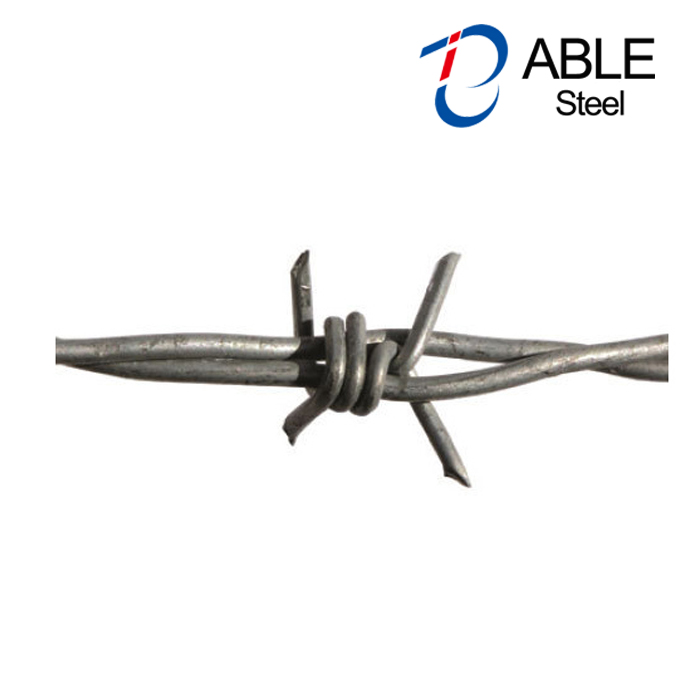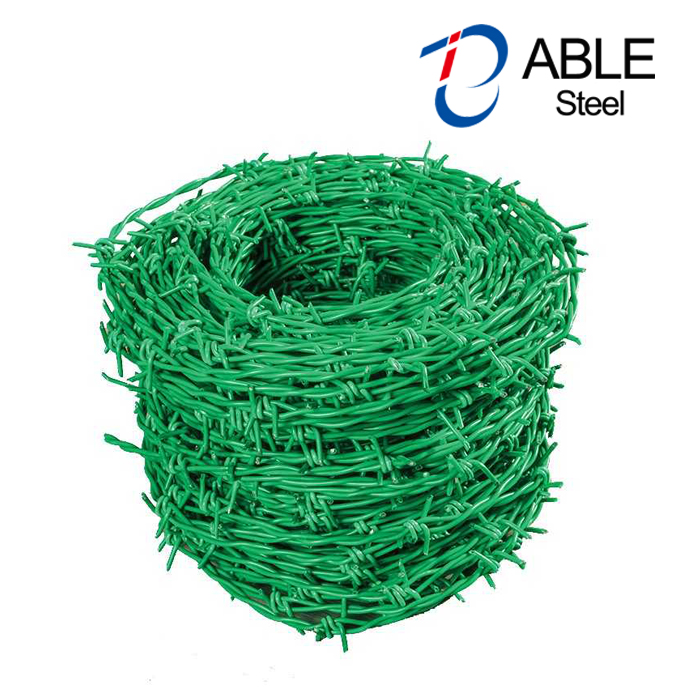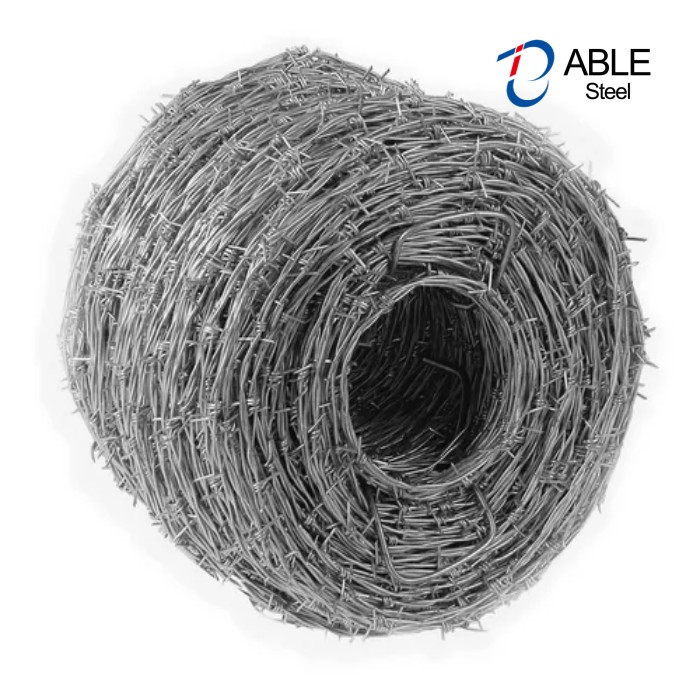The production process of Barbed Wire involves several steps, including wire drawing, barbing, twisting, and galvanization. Its surface treatment have galvanized or PVC coated. Here is a detailed explanation of each step: 1. Wire Drawing: The production of barbed wire starts with wire drawing. In this step, high-quality steel wire is drawn through a series of dies to reduce its diameter and increase its length. This process also helps in improving the wire's strength and flexibility. 2. Barbing: After wire drawing, the wire is fed through a barbing machine. The barbing machine has sharp blades that cut the wire at regular intervals. These blades create sharp barbs or spikes on the wire, which are essential for the security and deterrent properties of barbed wire. 3. Twisting: Once the wire is barbed, it is then twisted together to form the characteristic spiral shape of barbed wire. Twisting is usually done using a twisting machine, which rotates the wire and intertwines the barbs together. The number of twists per meter can vary depending on the desired strength and effectiveness of the barbed wire. 4. Galvanization: After the twisting process, the barbed wire is usually galvanized to enhance its durability and resistance to corrosion. Galvanization involves coating the barbed wire with a layer of zinc through a process called hot-dip galvanizing. In this process, the wire is dipped into a bath of molten zinc, which adheres to its surface, forming a protective coating. 5. Cutting and Packaging: Once the galvanization process is complete, the barbed wire is cut into desired lengths using cutting machines. The cut barbed wire is then packaged in rolls or coils for transportation and storage. The packaging can vary depending on the specific requirements of customers or the intended use of the barbed wire.
Barbed wire has various applications across different industries and sectors. Some of the most common applications of barbed wire include:
1. Agricultural Fencing: Barbed wire is extensively used in agriculture to create fences and enclosures for livestock, such as cattle, horses, and sheep. It helps in keeping the animals within a designated area and prevents them from straying or being stolen. It can be a supplement of chainlink fence, Welded Wire Mesh Fence,etc.
2. Security Fencing: Barbed wire is widely employed as a security measure to deter unauthorized access and protect sensitive areas, including military installations, prisons, industrial sites, and private properties. The sharp barbs act as a physical barrier, making it difficult for intruders to climb over or cut through the fence.
3. Border Control: Barbed wire is often used along international borders to prevent illegal immigration, smuggling, and unauthorized crossing. It acts as a deterrent and provides an additional layer of security.
4. Construction Sites: Barbed wire is commonly used in construction sites to create temporary barriers and restrict access to hazardous areas. It helps in maintaining safety and preventing accidents or theft.
5. Wildlife Conservation: Barbed wire fences are used in wildlife conservation areas to protect endangered species and prevent human-wildlife conflicts. These fences help in maintaining designated habitats and preventing animals from straying into human settlements.
6. Sports Facilities: Barbed wire is sometimes used in sports facilities, particularly in sports like cricket and baseball, to demarcate boundaries and prevent spectators from encroaching onto the playing area.
7. Perimeter Security: Barbed wire is utilized to secure the perimeters of various facilities, such as power plants, water treatment plants, and warehouses. It helps in protecting critical infrastructure and preventing unauthorized access.
8. Temporary Event Security: Barbed wire fences are often set up for temporary events, such as concerts, festivals, and political rallies, to maintain crowd control and prevent unauthorized entry.
9. Animal Control: Barbed wire can be used to create enclosures or boundaries to control the movement of animals, such as dogs or livestock, within a specific area.
10. Prison Security: Barbed wire is extensively used in correctional facilities to create secure perimeters and prevent prisoners from escaping. The sharp barbs act as a deterrent and make it difficult for inmates to breach the fence.
It's important to note that the production process of barbed wire can vary slightly depending on the manufacturer and the specific type of barbed wire being produced. However, the steps mentioned above provide a general overview of the production process.



